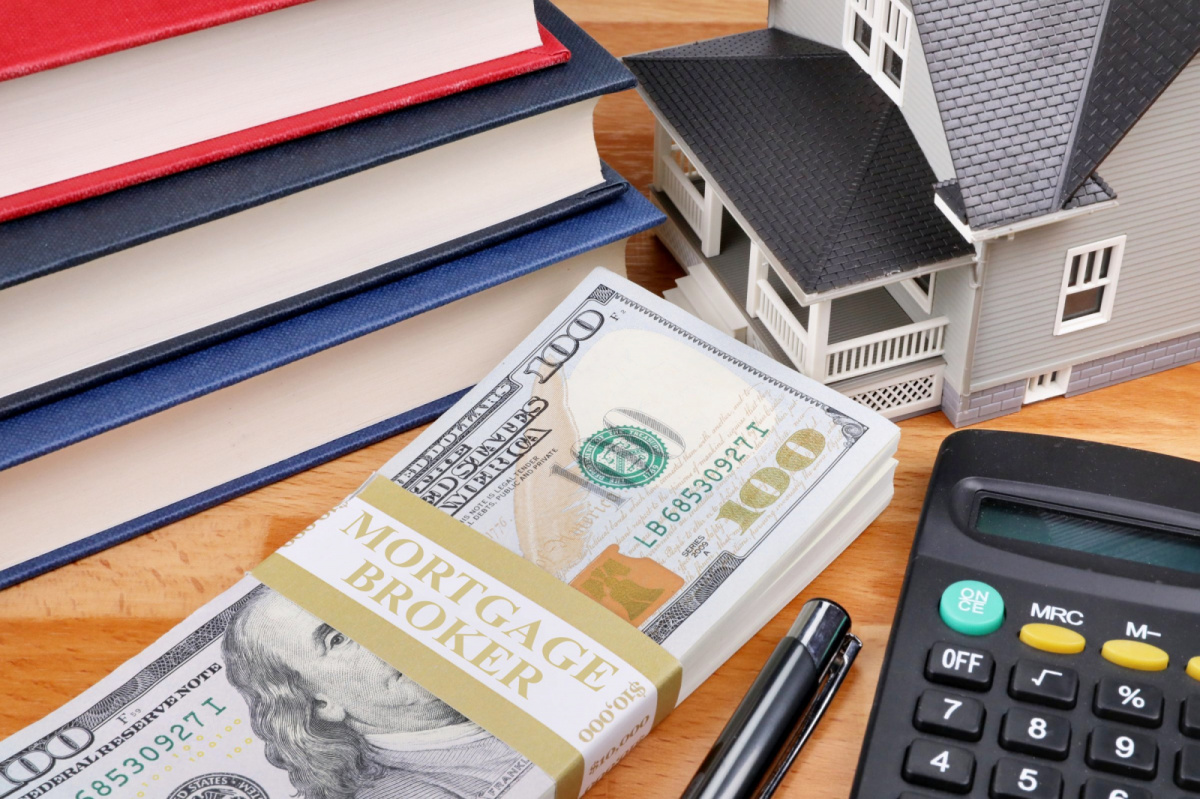Can You Refinance With A Lien On Your Home?

Table of Contents
- What are the Different Types of Liens
- How Do Lenders View Liens
- What is a First Lien Mortgage?
- Pro-Tip for Homeowners
- Does a Second Mortgage, or Refinancing still Create a Lien Against the House?
- Does a Tax Lien Affect a Mortgage Refinancing?
- Is a Cash Out Refinance a Lien?
- Six Ways to Refinance While You Have a Lien On Your Home
- How EverythingHomeOwner.com Helps With Refinancing
What are the Different Types of Liens
Before we get into discussing how to refinance your home with a lien on your home, let’s understand what liens are.
Two Types of Liens
Voluntary liens and involuntary liens are two types of encumbrances that can affect the ownership and transfer of property. Understanding the differences between these liens is crucial for homeowners, especially when considering mortgage refinancing.
Voluntary Liens
Voluntary liens are those that people willingly enter into, typically for the purpose of obtaining financing. Examples of voluntary liens include a first mortgage, a home equity loan, or a line of credit. In these cases, the property itself serves as collateral for the loan. By pledging the property as an asset, homeowners can secure the financing they need. Voluntary liens are created through an agreement between the lender and the borrower, and they are typically recorded in public records.

Involuntary Liens
Involuntary liens, on the other hand, are imposed on people without their consent. These liens can be the result of various circumstances and can have serious implications for homeowners. Some common examples of involuntary liens include IRS delinquent taxes, court judgments, past-due child support, or debts owed to contractors or mechanics. Involuntary liens are typically imposed as a result of legal action taken against the homeowner. These liens can also be recorded in public records, making them discoverable during a title search.
How Liens Affect Mortgage Refinancing
When it comes to mortgage refinancing, both types of liens can impact the process. If a homeowner has a voluntary lien, such as a first mortgage, it is essential to consider the lien amount and the terms of the existing loan when refinancing. The new lender will need to ensure that the refinanced loan amount is sufficient to pay off the existing lien.
If there is an involuntary lien on the property, refinancing can become more complicated. In most cases, lenders will require the homeowner to satisfy the lien before approving a refinance. This is because the involuntary lien takes priority over any new financing, and the lender wants to ensure that their loan will be secured by a clear title.
In some cases, it may be possible to refinance with an involuntary lien on the property. However, this will depend on the specifics of the lien, the loan-to-value ratio, and the lender's policies. Homeowners should consult with a mortgage professional who specializes in refinancing to explore their options.
Related Reading
• How To Refinance An Inherited Property To Buy Out Heirs
• Bad Credit Home Loan Refinance
• Mortgage Refinance Questions
• Reverse Mortgage Vs Refinance
How Do Lenders View Liens
When it comes to financing or refinancing a mortgage, lenders always want to protect their interests and ensure they have the highest debt priority in case of bankruptcy. That's why lenders will typically require involuntary liens to be resolved and the title to be cleared of any involuntary liens before proceeding with the financing or refinancing process.
Involuntary Liens Increase Risk for Lenders
Involuntary liens are legal claims placed on a property without the owner's consent. These can include tax liens, judgment liens, or mechanic's liens. When a lender sees that there is an involuntary lien on a property, it raises concerns about the borrower's ability to repay the loan and increases the risk of the lender losing their first-position priority to other potential parties in case of bankruptcy.
To mitigate this risk, lenders will want to see the lien resolved before proceeding with the financing or refinancing. Resolving the lien involves satisfying the claim and obtaining a lien release or satisfaction of judgment from the lien holder. This ensures that the lien no longer poses a threat to the lender's first-position priority.
Additionally, lenders will want to have a clear title on the property. A clear title means that there are no outstanding liens or encumbrances that could affect the lender's interest in the property. By having a clear title, the lender can be confident that their mortgage will be the first priority in case of bankruptcy.
What is a First Lien Mortgage?
A first lien mortgage, also known as a primary lien or a first mortgage lien, is a term that is commonly used in the world of home financing. When you buy a home using a mortgage loan, your lender uses the home as collateral. They do this by placing a lien on the property, which gives them the right to take possession of the home if you fail to make your loan payments.
Think of a lien as a legal claim or a right that a lender has over your property. It is a way for the lender to protect their investment and ensure that they will be able to recoup their money if you default on your mortgage.

Lender Has First Rights to Proceeds from the Sale of the Property
The first lien is called the "first" because it takes priority over any other liens or claims on the property. In other words, if there are multiple liens on your home, the first lien holder has the first right to the proceeds from the sale of the property.
When you refinance your mortgage, you are essentially replacing your existing mortgage with a new one. This new mortgage will pay off your old mortgage and any other liens or claims on the property. The new lender will then have the first lien on your home.
However, it's important to note that refinancing with a lien on your home can be more complicated than a regular refinance. The presence of a lien can make it more difficult to find a lender who is willing to work with you. Additionally, the lien holder may need to release the lien and provide documentation to the new lender as part of the refinancing process.
Pro-Tip for Homeowners
EverythingHomeOwner.com is a comprehensive platform that seamlessly connects homeowners with local lenders, enabling them to secure the best refinancing options and rates. By leveraging advanced technology and a vast network of trusted lenders, EverythingHomeOwner.com simplifies the refinancing process, eliminating the need for homeowners to conduct time-consuming research and outreach.
Through a user-friendly interface, homeowners can easily enter their property and financial information, allowing the platform to match them with local lenders who specialize in their specific needs. This personalized approach ensures that homeowners receive tailored refinancing options that align with their unique circumstances. With EverythingHomeOwner.com, homeowners can confidently explore refinancing options, knowing that they have access to the most competitive rates and favorable terms available in their local market.
Does a Second Mortgage, or Refinancing, still Create a Lien Against the House?
Refinancing and taking out a second mortgage are two options available to homeowners who want to tap into the equity of their property. Let's break down how these processes work, as well as explain how a lien comes into play when you have a second mortgage.
When you refinance your home, it means you're replacing your current mortgage with a new one. The goal is usually to secure a lower interest rate, extend the loan term, or both. In simple terms, refinancing allows you to obtain a new loan that pays off your existing mortgage. The new loan is then repaid over time, typically with monthly payments.

Second Mortgages Introduce a New Lien
On the other hand, a second mortgage is a separate loan taken out against your property while you still have a primary mortgage. This can be a fixed amount or a line of credit, commonly known as a home equity line of credit (HELOC). The second mortgage utilizes the equity you've built up in your home as collateral. Equity is the value of your home minus the amount you still owe on your primary mortgage.
Related Reading
• Cash Out VS No Cash Out Refinance
• Title Insurance For Refinance
• Refinancing Jumbo Mortgage
Does a Tax Lien Affect a Mortgage Refinancing?
If a homeowner wants to refinance their mortgage while having a federal tax lien on their home, they will need to fill out IRS Form 14134, also known as the "Application for Certificate of Subordination of Federal Tax Lien." This form is necessary because the federal tax lien takes priority over other liens, including a new mortgage. By applying for subordination, the homeowner is essentially asking the IRS to allow the new mortgage to take priority over their tax lien.
IRS Approves Subordination to Mortgage
If the IRS approves the request for subordination, this means that they agree to make the tax lien subordinate to the new mortgage. This is beneficial for the homeowner because it allows them to refinance their mortgage and potentially secure a lower interest rate or better loan terms.
Refinancing is A Way to Pay Off IRS Obligations
One of the advantages of refinancing with a lien on your home is that it provides an opportunity for homeowners to pay their obligation to the IRS through refinancing. If the tax debt is lower than the equity in the home, homeowners may be able to include the amount owed to the IRS in the new mortgage. This way, they can pay off their tax debt over time through their monthly mortgage payments.

Is a Cash Out Refinance a Lien?
When it comes to mortgage refinancing, one option that homeowners often consider is a cash-out refinance. This allows them to access the equity in their home and use it for a variety of purposes, such as debt consolidation, home improvements, or other financial needs. One common question that arises is whether a cash-out refinance creates an additional lien against the property. The answer is no, and here's why.
Unlike a home equity line of credit (HELOC) or a home equity loan, a cash-out refinance does not require a second lien on your property. Instead, it involves refinancing your first mortgage for a larger loan amount based on the equity you have built up in your home. This means that the new loan pays off your existing mortgage, and you receive the difference in cash.
Replace your Existing Mortgage
The reason why a cash-out refinance does not create an additional lien is because it replaces your existing mortgage, rather than adding a new one. The equity in your home serves as collateral for the new loan, just like it did for your original mortgage. The lender assesses the value of your property, your creditworthiness, and other factors to determine the amount you can borrow.
Related Reading
• Hard Money Refinance
• Can I Add My Spouse To My Mortgage Without Refinancing
• Refinance Reverse Mortgage
Six Ways to Refinance While You Have a Lien On Your Home
Here are some refinancing options you can consider if you want to refinance and have a lien on your home.
| Refinancing Option | Broad Availability | Relative Interest Rate |
|---|---|---|
| Cash-Out Refinance | Widely Available | Typically Higher |
| Home Equity Line of Credit (HELOC) | Common | Variable, May Vary |
| Second Mortgage | Moderately Available | Higher |
| FHA Cash-Out Refinance | Limited Availability | Competitive |
| VA Cash-Out Refinance | Limited Availability | Competitive |
| Private Lender Refinance | Case-By-Case Basis | Highest |
How EverythingHomeOwner.com Helps With Refinancing
Homeowners who are considering refinancing their home often face the daunting task of speaking to multiple mortgage brokers, navigating through their financial situation, and trying to figure out the best options available to them. This process can be tedious and time-consuming, leaving homeowners overwhelmed and confused. Fortunately, EverythingHomeOwner.com simplifies this entire process by instantly connecting homeowners with their local lenders and giving them the power to choose the option that makes the most sense for them.
EverythingHomeOwner.com eliminates the need for homeowners to spend hours researching and contacting multiple mortgage brokers. Instead, homeowners can simply visit the website, enter their information, and be connected with local lenders who can provide them with various refinancing options. With this platform, homeowners have the freedom to compare rates, terms, and fees from different lenders all in one place, allowing them to make an informed decision about their financial future.